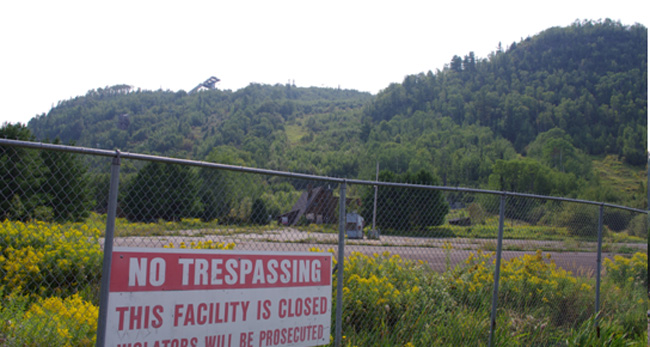Big plans for Big Thunder Ski Hill

By Rick Garrick
Fort William Chief Peter Collins is looking to reopen the old Big Thunder ski jumping facility, which closed a year after hosting the FIS Nordic World Ski Championships 1995.
“We’ve looked at many different facets of what we can do on the site and how we can develop the site to bring tourism into the area and more people into the City of Thunder Bay,” Collins says. “Hopefully we can get to a point where the province says OK, this is how it is going to transpire and use it as a training facility for ski jumping, educational purposes and also for nature trails, condo settings or whatever we as a team develop going forward.”
Collins says the Robinson Superior community plans to work in partnership with the City of Thunder Bay, Lakehead University, Confederation College, Friends of Big Thunder and the Township of Neebing to redevelop the facility. Big Thunder is located in Neebing Township about three kilometres west of Fort William’s south-western reserve boundary.
“We’re trying to give the province some solutions on how to deal with the Big Thunder site,” Collins says. “Hopefully we can create a sustainable future for all of our communities that we represent.”
Collins provided provincial officials with a brief on the proposal during Premier Kathleen Wynne’s visit to Fort William for the Aug. 26 Anishinabek-Ontario summit. “We’re hoping that in the coming weeks we get some feedback from them on how they see it being structured and they see it being put forward,” Collins says.
The first Big Thunder jumps were developed by original owners Knute and Thor Hansen in the 1960s, and the K120 and K90 jumps were completed in 1974 after a change in ownership. The Canadian Nationals were first held at Big Thunder in 1975, and the hill was developed into a national training centre in the 1980s. The K64, K37, K20 and K10 ski jumps were built after 1985. After the 1995 World Championships were appointed to Thunder Bay in 1990, the ski centre was enlarged, the larger jumps were equipped with floodlights and a 50-kilometre cross-country trail system was developed.
“It’s on the back part of our lands that was originally Fort William lands — that was actually all of our land at one point in time,” Collins says. “(But) that’s not the step we are taking. We’re trying to take this as a partnership and just a good relationship going forward.”
Collins says the ski jumping facility would provide youth from Fort William and surrounding communities with the opportunity to develop into world-class ski jumpers.
His cousin, Steve Collins, set the Big Thunder K120 men’s jump record of 128 metres in 1980. Fifteen years later Andreas Goldberger jumped 136 metres and Tommy Ingebrigtsen jumped 137 metres during the 1995 FIS Nordic World Ski Championships. Steve was inducted into the Canadian Ski Hall of Fame in 1995.
“He (Steve) set some records at that hill,” Collins says. “We had a ski jumping site in our community too at one time for training.”


